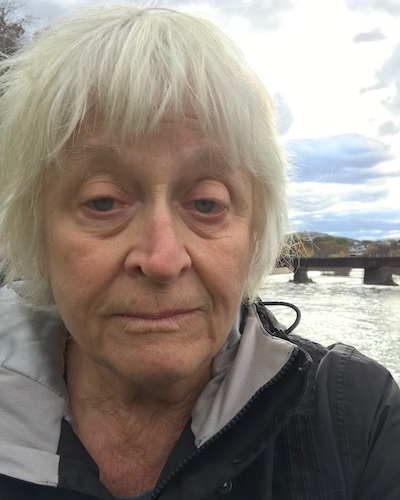PCA&D welcomes photo portraitist Judith Joy Ross on Oct. 3
Monday, September 30th, 2024

Judith Joy Ross, a prominent photographer whose work has been exhibited at MoMA, the Philadelphia Museum of Art, and internationally, is the guest of the Photography & Video Department on Thursday, Oct. 3. Don’t miss her presentation, open to the College community and the public, at 12:45 pm that afternoon.
Born in Pennsylvania, Ross still lives in her home state. Her portraiture work, since the 1980s, has focused a large-format camera “as a tool to capture the distilled essence of her brief encounters with a cross-section of the American people, with a focus on those in eastern Pennsylvania” (philamuseum.org).
Photography & Video Chair Eric Weeks, who met Ross as a graduate student 30 years ago, recalls that, “Her generous and kind spirit left an indelible mark.
“The fact that a viewer can understand something about Judith’s humanistic nature by looking at her photographs is what makes her one of the great portrait artists.”
Known, says Artnet, for “capturing the innocence of youth, the faces of political power, and the emotional toll of war through her photography,” Ross has exhibited extensively at some of the world’s most prestigious museums and galleries, including the Metropolitan Museum of Art, the Museum of Modern Art, the San Francisco Museum of Modern Art, the Museum of Fine Arts, Houston, the National Gallery of Canada, Die Photographische Sammlung, the Pilara Foundation Collection, Pier 24 Photography, the Victoria and Albert Museum, and the Yale University Art Gallery. Her background, influenced by photographers such as Diane Arbus and Aaron Siskind, includes studies at Moore College of Art in Philadelphia and the Institute of Design at the Illinois Institute of Technology, Chicago. Her books include Contemporaries (1995), Portraits (1996), Portraits of the Hazleton Public Schools (2006) and Protest the War (2007), and she has been awarded a Guggenheim Fellowship in recognition of her work.
In a 2021 essay for Aperture magazine, Rebecca Bengal recounts time spent observing Ross and reaches out to other photographers and artists to reflect on how Ross’s work impacts and influences their own. And Bengal examines the impact of the 8-by-10 dimensions of Ross’s final contact print images, identical to the 8-by-10 dimensions of their negative. “To enlarge them, she believes, could be ‘exploitive,'” Bengal writes of the final images. “Of the prints’ scale and intimacy, Ross says, ‘They are asking you to come closer, and say hi.'”
And it’s that intimacy that gives Ross’s photographs their intense, personal power.
“I photographed people from the get-go,” Ross tells Bengal in her Aperture profile. “Even though I didn’t know how to have them in my life. That’s probably why I’m good at it.
“Something happens, I see them intensely, and we never see each other again. I know it’s just a photograph. I know I’m being delusional. But I like to think I’m capturing the real thing.”
